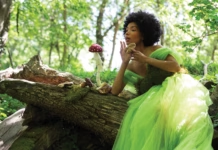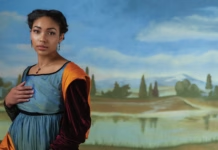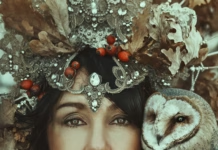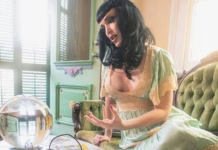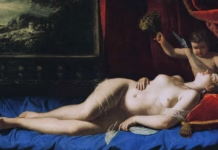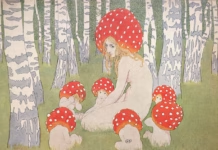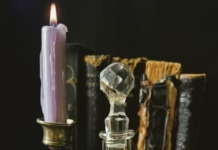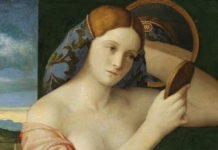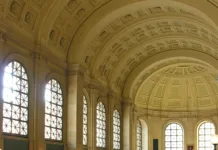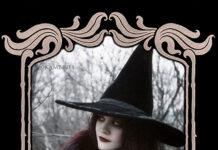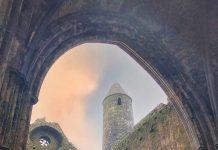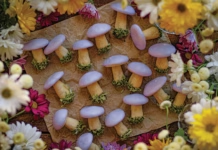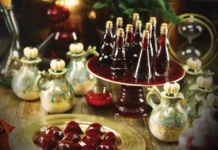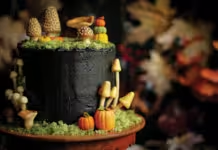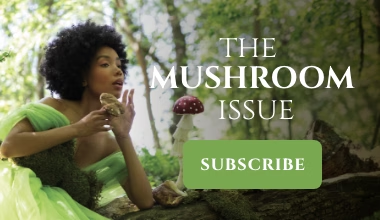As the classic Disney song reminds us, “Beauty and the Beast” possesses a rich history and a powerful legacy of enchantment. While most versions we see and hear today are retellings of the iconic 18th century French tale by Madame Beaumont, its roots go back thousands of years. Hundreds upon hundreds of recognizable versions can be found among storytellers and between book covers all over the world, offering glimpses into many cultures while revisiting familiar, resonant themes.
While it’s impossible to pinpoint the origin of the story, the oldest known Western version is Apuleius’s Roman myth of Cupid and Psyche. In this tale, a beautiful girl is sacrificed to a mysterious monster who she eventually discovers is the god of love himself. Even older stories of a woman who must marry a reptile or an ogre circulated throughout Africa and Asia in the first few centuries B.C.; a tale called “The Girl Who Married a Snake” was recorded in Sanskrit in the Indian Panchatantra more than 2,000 years ago.
Before the Beast was simply a Beast, he took on the forms of many different animals and figures as the tale traveled around the world. He was a pig in Italy, a monkey in Japan, a bear in Norway, a great green worm in France, a lizard in Indonesia, and a dog in the United States. When the Grimm brothers took up the tale in the 19th century, they edited four different versions: In “The Iron Stove,” a princess promises to marry an iron stove she finds in the forest, while “Hans My Hedgehog” tells the improbable story of a half-human, half-hedgehog hybrid who rides around the forest on the back of his rooster steed, playing a bagpipe and herding sheep. In many of these early bridegroom tales, the Beast is threatening, even violent. The pig-beast of the Italian “Pig King” is as cruel as Bluebeard, killing his first two wives in succession before marrying their youngest sister, whose patience and good nature enable his princely transformation.

Unlike many other fairy tales, “Beauty and the Beast” has most often been shaped by the words of women. French noblewomen told each other ornate, transgressive versions of the story over and over in their salons and parlors, and women eventually wrote the versions that would stick. Gabrielle-Suzanne Barbot de Villeneuve penned her novella Beauty and the Beast in 1740, and in 1756, Jeanne-Marie Leprince de Beaumont abridged and revised Villeneuve’s tale into a short story, also called “Beauty and the Beast.” These versions establish the Beast’s roses as symbols of love, magic, and transformation in the tale—and they emphasize the kindness and humanity of the Beast, marking an important turning point in the tale’s development.
Article from Issue #34 Print
Today, we turn to “Beauty and the Beast” to dream about love, wildness, and understanding. Recent novels and stories, films and images, have shown us compassionate Beasts who provide adventure and true happiness for Beauties who feel out of step with the modern world. In Angela Carter’s Gothic short story “The Tiger’s Bride,” Beauty abandons not only her human life but her human body, transforming into a tiger to match her Beast, while Francesca Lia Block’s Beauty resents her husband’s transformation into a human and mourns the loss of her wild Beast. Newbery-winning novelist Robin McKinley returns to the fairy tale again and again in her books, imagining unconventional Beauties with a strong sense of purpose and, frequently, Beasts who retain their beastly shape and nature even as they find romance with their partner. Disney’s film version presents a Beauty who finds “much more than this provincial life” in the company of a Beast with a gentle soul beneath a ferocious exterior. The most recent cinematic reimagining, a French film directed by Christophe Gans, unfolds in an impossibly beautiful landscape and draws upon folktales of magical deer and shape-shifters to imbue the story with a new depth and complexity.
 “Beauty and the Beast” has transcended the bounds of pure story to provide inspiration for many different art forms. Its influence is especially strong in the world of music. David Bowie’s experimental song “Beauty and the Beast” explores monstrosity and mania, using the fairy tale’s title as a grounding refrain throughout, while the Gothic metal band Nightwish recorded a song of the same name, exploring the nature of beauty and romance with a dark twist. In the metal genre, the phrase “Beauty and the Beast” has taken on a life of its own—when soaring, delicate sopranos are juxtaposed with deep, growling vocals, the combination is referred to as “Beauty and the Beast,” showing how the tale type haunts an entire category of music.
“Beauty and the Beast” has transcended the bounds of pure story to provide inspiration for many different art forms. Its influence is especially strong in the world of music. David Bowie’s experimental song “Beauty and the Beast” explores monstrosity and mania, using the fairy tale’s title as a grounding refrain throughout, while the Gothic metal band Nightwish recorded a song of the same name, exploring the nature of beauty and romance with a dark twist. In the metal genre, the phrase “Beauty and the Beast” has taken on a life of its own—when soaring, delicate sopranos are juxtaposed with deep, growling vocals, the combination is referred to as “Beauty and the Beast,” showing how the tale type haunts an entire category of music.
The story has also had a profound impact on fashion, both off-the-rack and couture. Clothing featuring characters or images from Disney’s Beauty and the Beast can be readily found in stores and venues like Hot Topic or TeeFury, and the story has inspired glamorous photo shoots and magazine spreads, most notably Annie Leibovitz’s stunning composition for Vogue featuring Drew Barrymore as Beauty, dressed in a crimson Christian Lacroix gown and golden lace petticoat. Fashion designer Alexander McQueen’s collections frequently revealed strong influences from the fairy tale; a posthumous exhibition of his work was fittingly titled “Savage Beauty.”
Illustrators and painters have returned to “Beauty and the Beast” again and again for inspiration, frequently depicting the Beast’s confrontation with Beauty’s father over the rose, the titular pair dining together, and Beauty discovering the dying Beast in his garden. The styles and atmosphere vary widely from artist to artist, ranging from the strong lines and bold colors of Walter Crane’s illustrations to the dreamy compositions and cool colors employed by Edmund Dulac.
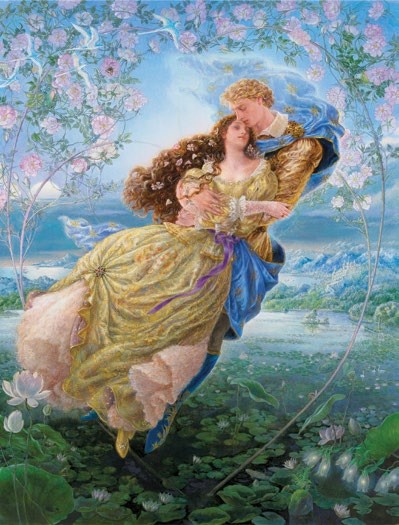
The tale has been an immensely popular subject for picture books, from Marianna and Mercer Mayer’s lush, colorful interpretation to the eagerly anticipated edition by Kinuko and Mahlon Craft, featuring the stunningly intricate, ethereal images for which Kinuko is known.
The legacy of “Beauty and the Beast” ripples out, touching and transforming so many of the stories that we tell and the ways we create the world around us. Every story of a kind monster, every time we admire a solitary rose, every time our perception of beauty is challenged, “Beauty and the Beast” is weaving and wending through the fibers of our culture in a tapestry that trails behind us and unfurls into stories yet untold.
Article from Issue #34 Print



